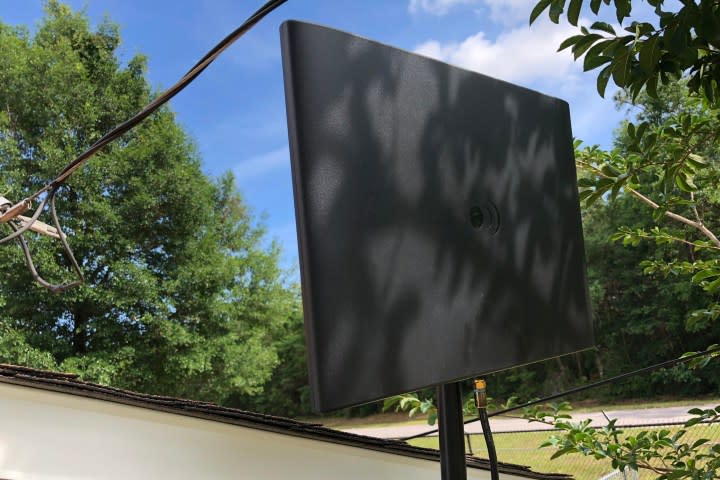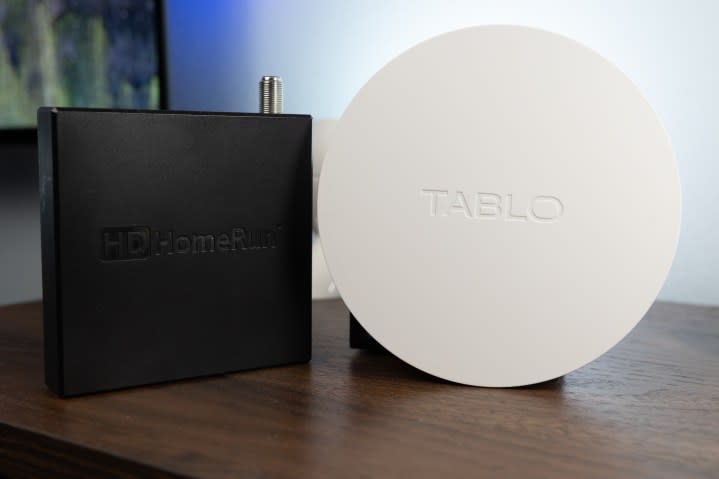2024 is the year you need to have an antenna for your TV
This article contains affiliate links; if you click such a link and make a purchase, Digital Trends and Yahoo Inc. may earn a commission.

There’s a better-than-average chance that whatever you’re paying for your favorite streaming service is going to go up over the next year or two. Or three. The simple fact of the matter is that the streaming companies are going to do whatever they can to squeeze every last cent from their customers. That literally is their job, but that doesn’t make that pill any more easy to swallow every time you get an email announcing a price increase.
The good news, if there is any, is that we also have more “free” options than ever. While the new ones all entail streaming shows and movies bracketed by advertising, there’s another category that includes your local broadcast channels. And that’s an important category because one of the biggest questions about live streaming services used to be whether they had your local channels. They do, but prices keep going up. But your local channels don’t also have to be a lock-in. You basically can get them for free.
All you need is an over-the-air antenna, and a tuner to connect it to.
Yes, that means you might have to spend a little money up front. But you can get a decent antenna for about the same price as a month’s worth of your favorite live streaming service. And with it, you theoretically should be able to get your local broadcast channels.
An antenna should be a one-time expense. And that means it’s worth doing things right the first time. You want your antenna to be outdoors, if possible, and up as high as you can reasonably get it. You also want it to be facing your local broadcast towers. Get that part right, and it’s possible to get dozens of local channels, all for free, over the air.
That’s the antenna part. But you also need a tuner to connect it to. The good news is that just about every modern television should have a tuner built in already. (There was a brief period when that wasn’t the case, but those sets should be pretty rare at this point.) So you can run your antenna straight into your TV, scan for channels, and call it a day.

But for about $100 or so, you can connect your antenna to a box that will share the feed — and not to repeat ourselves, but we mean the free broadcast feed coming into the antenna — with just about any modern device on your home network. We’re talking phones, tablets, and streaming gear like a Fire TV Stick, Roku, or Apple TV. And they can even make it easy to record that over-the-air TV so you can watch whatever, whenever. That’s better than a single antenna going into a single TV.
So we’re really talking no more than a couple hundred bucks at the high end, and a one-time cost at that. Combine it with a free service like Tubi, Pluto, The Roku Channel, or any of the other free ad-supported TV services, and you’ve got more content than you could ever watch in a single day — all without any additional monthly subscription fees, which is something just about all of us can enjoy.
We haven’t mentioned NextGen TV here, otherwise known as ATSC 3.0. That’s the next-generation broadcast standard (thus the name) that among other things allows for content in 4K resolution and HDR — all over the air, and still free of charge. But 2023 has come and gone without any real uptake. In fact, TV manufacturers like LG and networked tuners like Tablo have actively said the boondoggle that is NextGen TV has precluded them from including ATSC 3.0 tuners in their products. So, maybe 2025 will finally be the year that starts to take shape.
But we wouldn’t bet on it.

